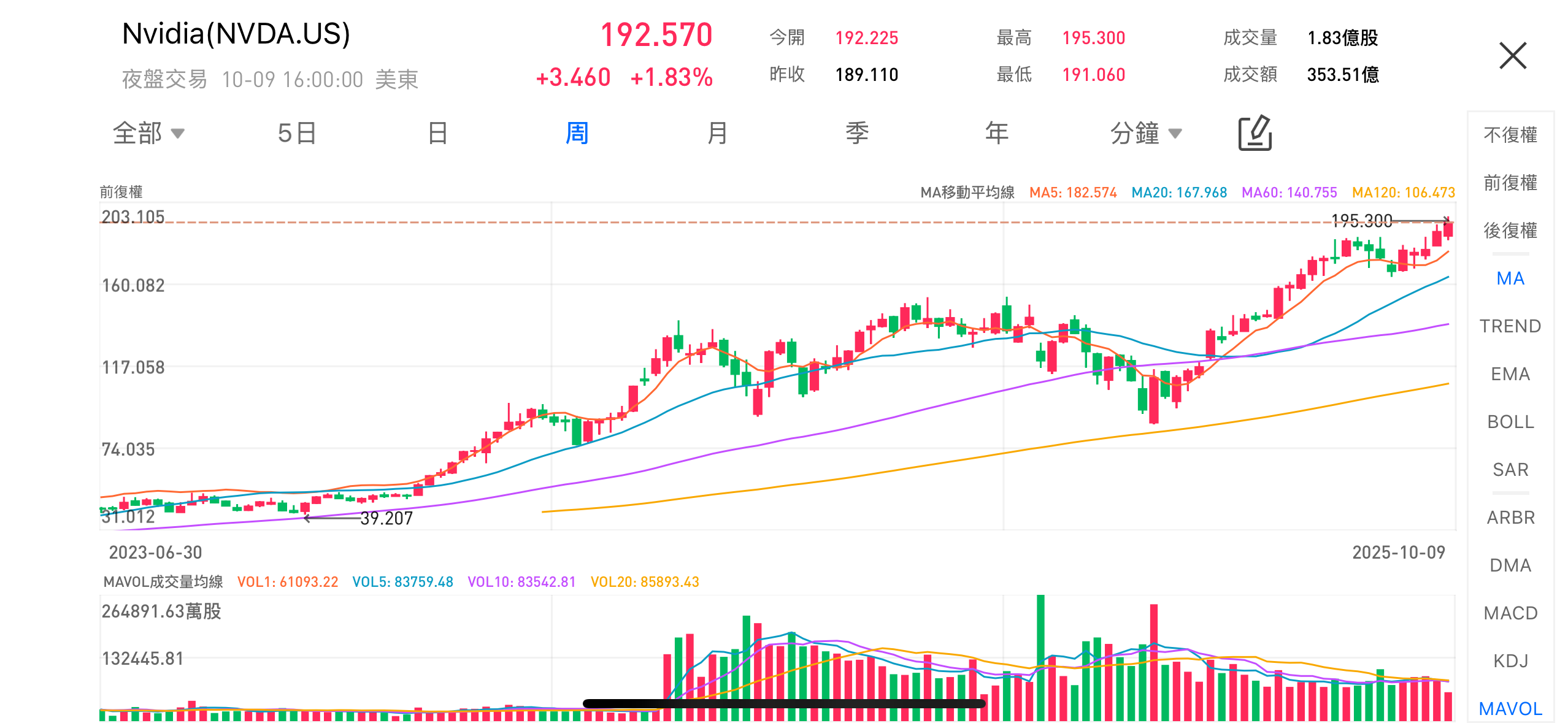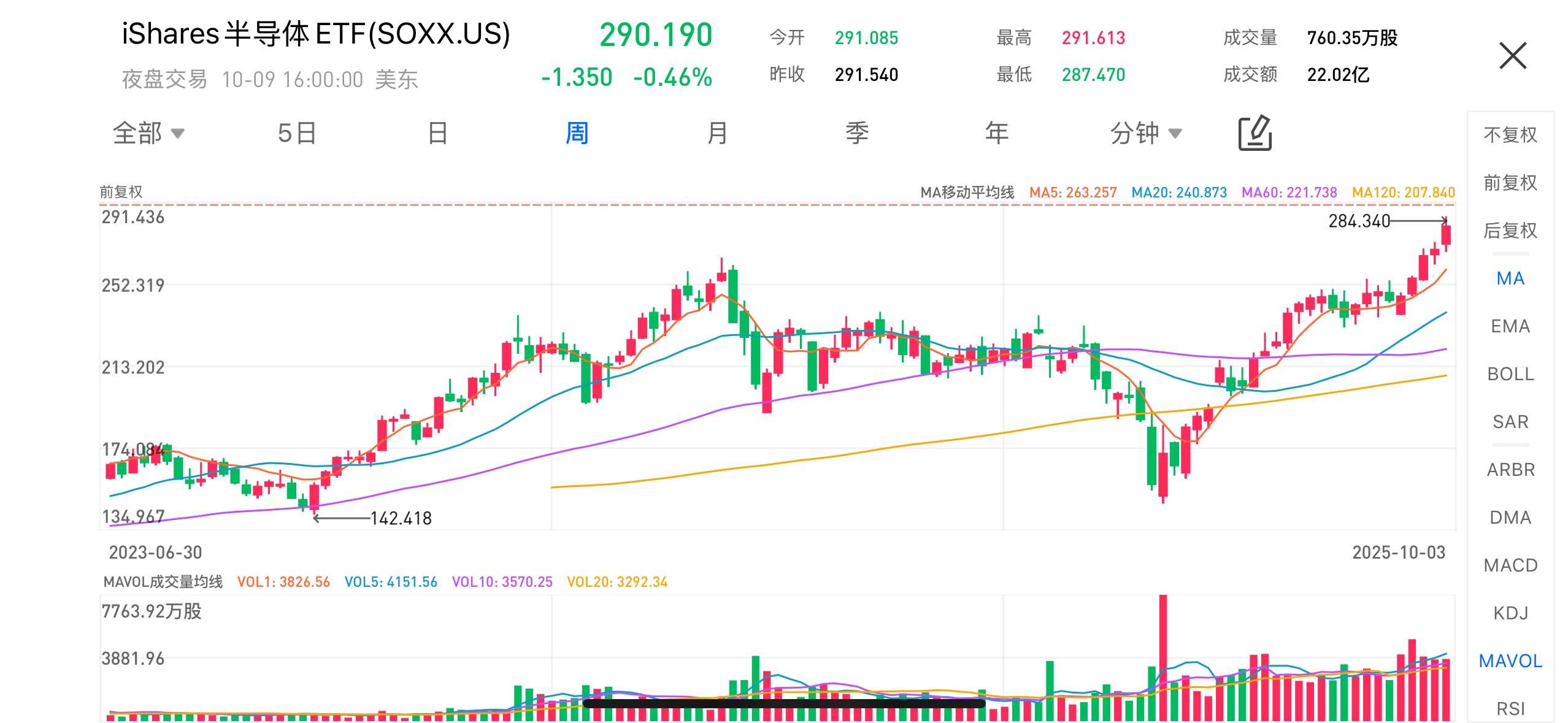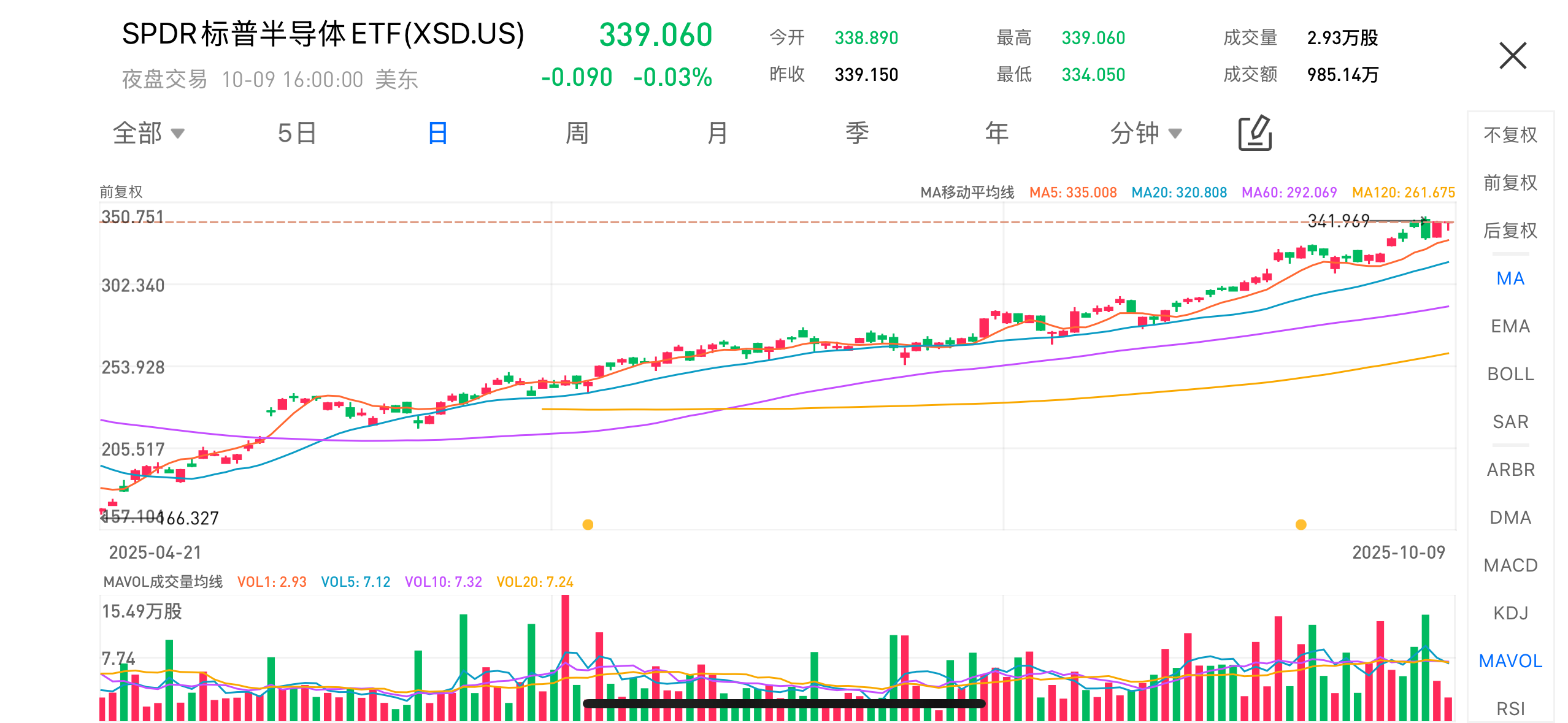On October 9, 2025, NVIDIA (ticker: NVDA.US) surged to a new record high of US$192.57, gaining 1.83% for the day. Despite broader market fluctuations, NVIDIA once again demonstrated its leadership in the artificial intelligence (AI) sector. Driven by sustained demand for AI chips and computing power, NVIDIA’s share price has soared nearly 390% since mid-2023, far outperforming the Nasdaq Index over the same period — underscoring the company’s strong growth momentum.
 (Image source: uSMART HK app)
(Image source: uSMART HK app)
The Future of the AI Market: AI ETFs Capture the Growth Opportunity
While NVIDIA remains the undisputed leader of the AI industry, its stock price volatility has prompted many investors to seek more balanced exposure through AI-themed exchange-traded funds (ETFs). By diversifying holdings across the semiconductor, chip manufacturing, and AI application value chain, these ETFs allow investors to benefit from the industry’s collective growth.
Among them, the iShares Semiconductor ETF (SOXX.US) has shown solid performance. Since the second half of 2023, SOXX has climbed from a low of around US$142 to US$290.19, an increase of more than 100%, forming a clear long-term uptrend. The ETF holds major positions in NVIDIA, TSMC, and Broadcom—key suppliers in the AI ecosystem—making its performance closely linked to the demand for AI chips.

(Image source: uSMART HK app)
Another standout performer is the SPDR S&P Semiconductor ETF (XSD.US). Unlike SOXX, XSD employs an equal-weight strategy, giving mid- and small-cap semiconductor companies higher representation. The chart shows a strong upward trend since April 2024, with XSD rising from about US$166 to US$339.06, more than doubling year-to-date. This reflects growing market confidence in second-tier AI supply-chain companies.
 (Image source: uSMART HK app)
(Image source: uSMART HK app)
Market Outlook: The Future Trends and Investment Opportunities of AI
In the long run, AI technologies are rapidly expanding into generative AI, autonomous driving, cloud computing, and medical technology, among other high-growth areas.
According to industry forecasts, the global AI market is expected to surpass US$3 trillion by 2030, with a compound annual growth rate (CAGR) of over 20%. NVIDIA will remain a key driver of AI computing power, while investors in AI ETFs can gain from the broader industry’s collective growth.
Compared with single-stock exposure, AI ETFs not only help mitigate individual stock volatility but also offer more stable returns during periods of market expansion. In the coming years, as AI adoption deepens and demand for computing power accelerates, AI-themed ETFs are expected to continue outperforming traditional tech indices—such as the Nasdaq-100—and become an essential component of long-term growth portfolios.



